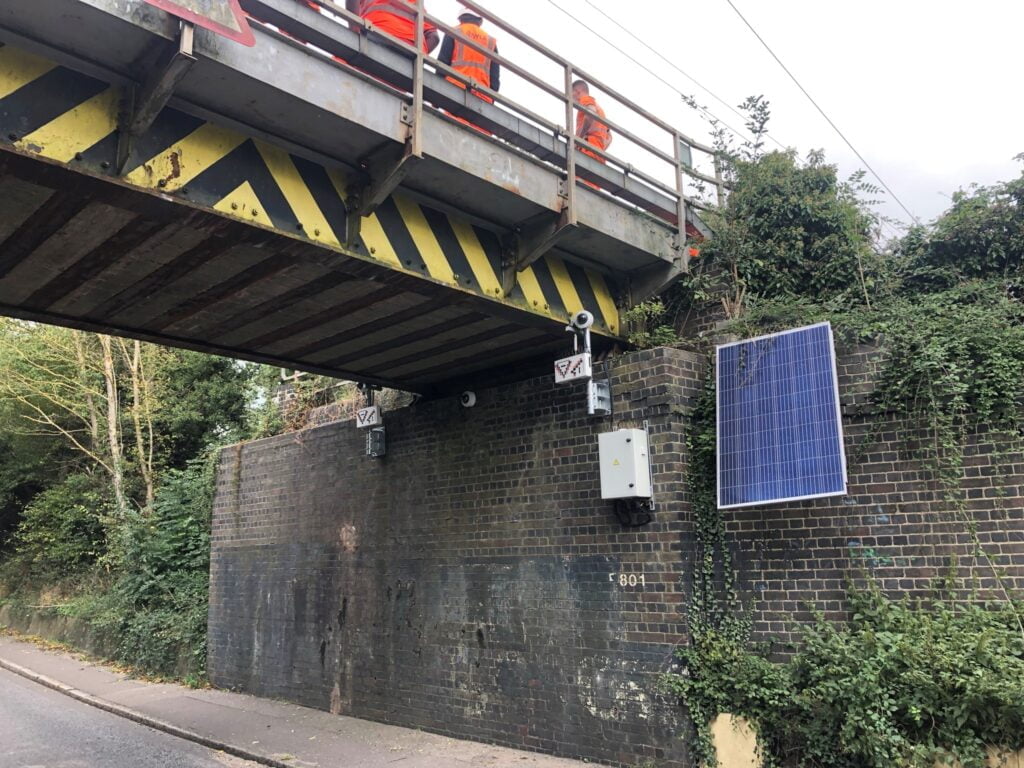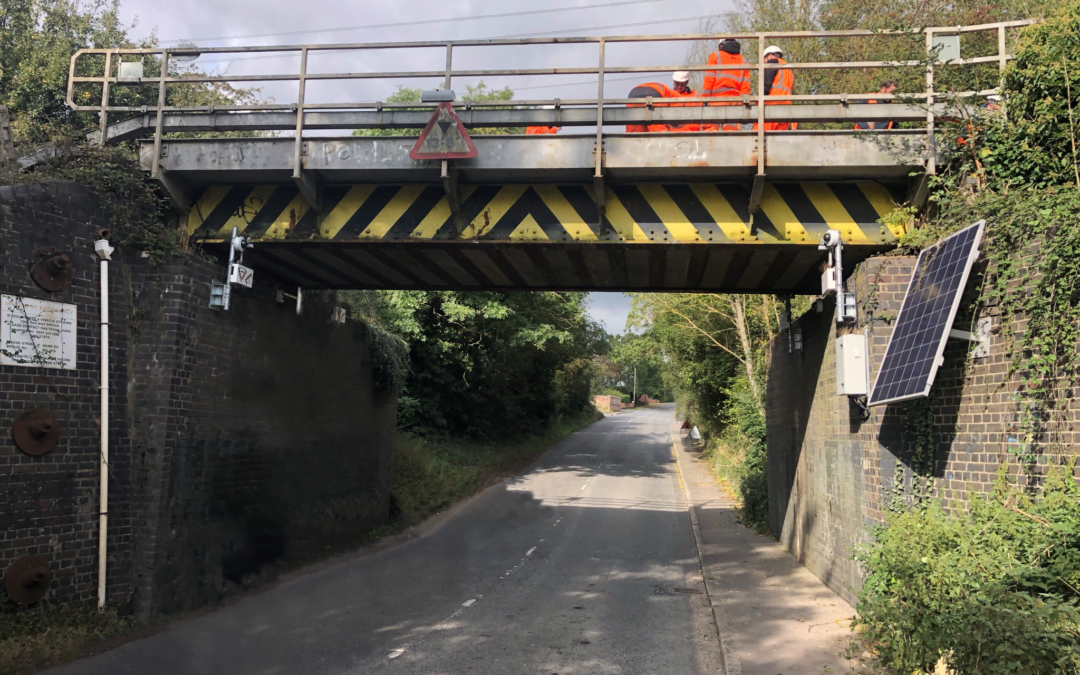When a lorry hit a railway bridge at high speed, engineers at WCS were called to inspect and assess the damage and residual risk caused by the crash.
A visual inspection was undertaken, and a strategy for repairs documented. Deemed safe, commencement of rail traffic was permitted to reduce impact on rail travel, repairs ordered, and recommendations made to reduce the likelihood of future incidents.
Collision background
The bridge strike took place in Wickford, Essex – between Wickford and Battlesbridge railway stations. The truck – travelling at around 60 mph – struck the bridge in an incident of high speed and insufficient vertical clearance.
Emergency services ordered that all railway traffic across the bridge be stopped and confirmed there were no serious injuries or fatalities. Murphy was tasked with making safe any compromise to structural integrity caused to the bridge by the vehicle’s impact.
Swift response limits impact
So that an engineer could rapidly advise on the structure’s state and any procedure of repair, Murphy placed an emergency call to WCS’s dedicated 24-hour response line. Within two hours, Ioannis Iliadis – Senior Engineering Manager at WCS – was on-site and liaising with Murphy and Network Rail.
Speed of response is always essential to WCS clients, but especially so in emergencies. The structural safety of the bridge, combined with the significant effect of halting train activity, demanded prompt attention. As a smaller, agile company, we can provide the responsiveness that such urgent situations demand.
Diagnosing with expertise
When inspected, the primary beams were observed to be in decent repair with pockets of surface corrosion. The bottom deck was in fair shape too with surface corrosion in the exposed portions of the steel frame. However, the support plates had shifted by about one centimetre.
WCS experts determined that the load trajectory from the crash had moved from the bridge deck to the supports and the abutments. The force of impact of the truck on contact with the structure had been accommodated by plastic distortion in the lorry, the crash area, and the structure itself.
“Drawing from experience, I could rapidly examine the state of the structure, from determining first principles to in-depth documentation of the foundation’s, abutments’, and bearings’ performance,” commented Ioannis.



Smart solutions
WCS’s emergency response team ruled that the bridge had incurred only marginal damage and that no urgent repairs were warranted. However, Ioannis advised that another impact might pose considerable issues in damaging the structure further. WCS provided a review outlining measures to repair the bridge and lessen the likelihood of future such impacts.
Restoring rail travel
Following the inspection, and having determined that there was only minimal deterioration to the superstructure and limited breakage to the bearings, we were able to recommend that rail services be restored quickly. In the name of safety – which is always our overriding concern – we advised Network Rail to confine rail operations to 20 mph in mitigation of additional wear to the bearings.
WCS stipulated that the bridge be jacked to its original position and any damaged elements such as the bearings be replaced. We also advised that the jacking of the bridge deck would affect the track over the bridge and require track realignment.
Pending further repairs, WCS advised that it would be prudent to include advice on how to reduce the chances of future such incidents. Our team recommended more visible signage and appropriate servicing of the lights that illuminate these signs. The advantage of installing extra signs on the road approaching the bridge was equally stated.
Additional steps
We relayed to responsible parties that the deployment of a crash barrier could be supportive. WCS proposed that the lighting on the bridge be audited, and a brief presented to responsible bodies on how illumination could be improved to decrease the probability of future such accidents.
It is believed that the structure will remain under surveillance. WCS advised that this supervision continue, and that any significant activity be brought to the attention of our engineering staff.
From the early morning emergency call to the reopening of rail and road traffic, WCS took time-tested, professional measures to ensure the safety of people and the integrity of the bridge.
In contacting our engineering team, the clients were guaranteed the responsiveness and tailored approach that comes only with an agile, expert team like WCS.
To find out more about this project, or any other WCS project, please go to our portfolio pages.
